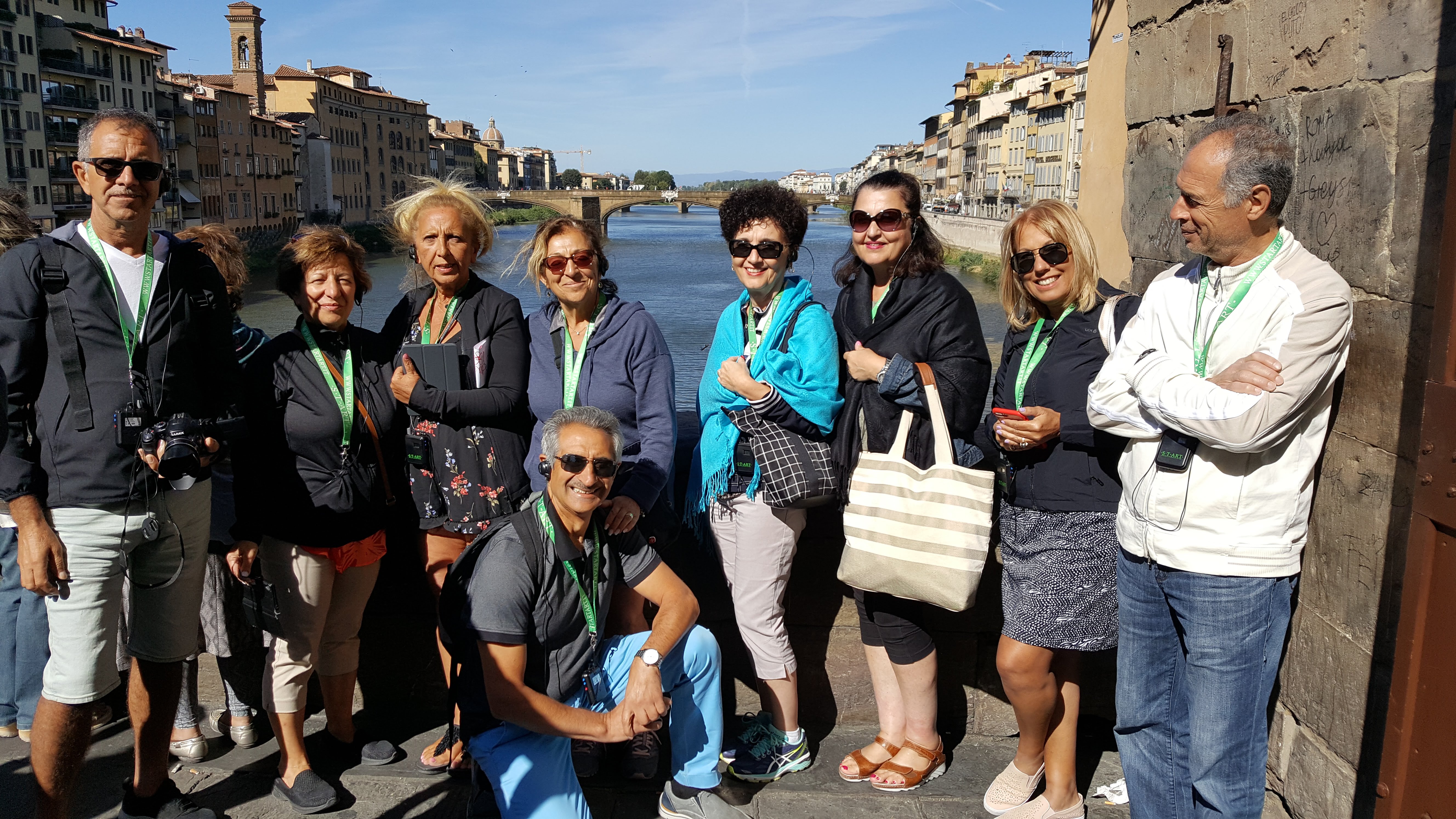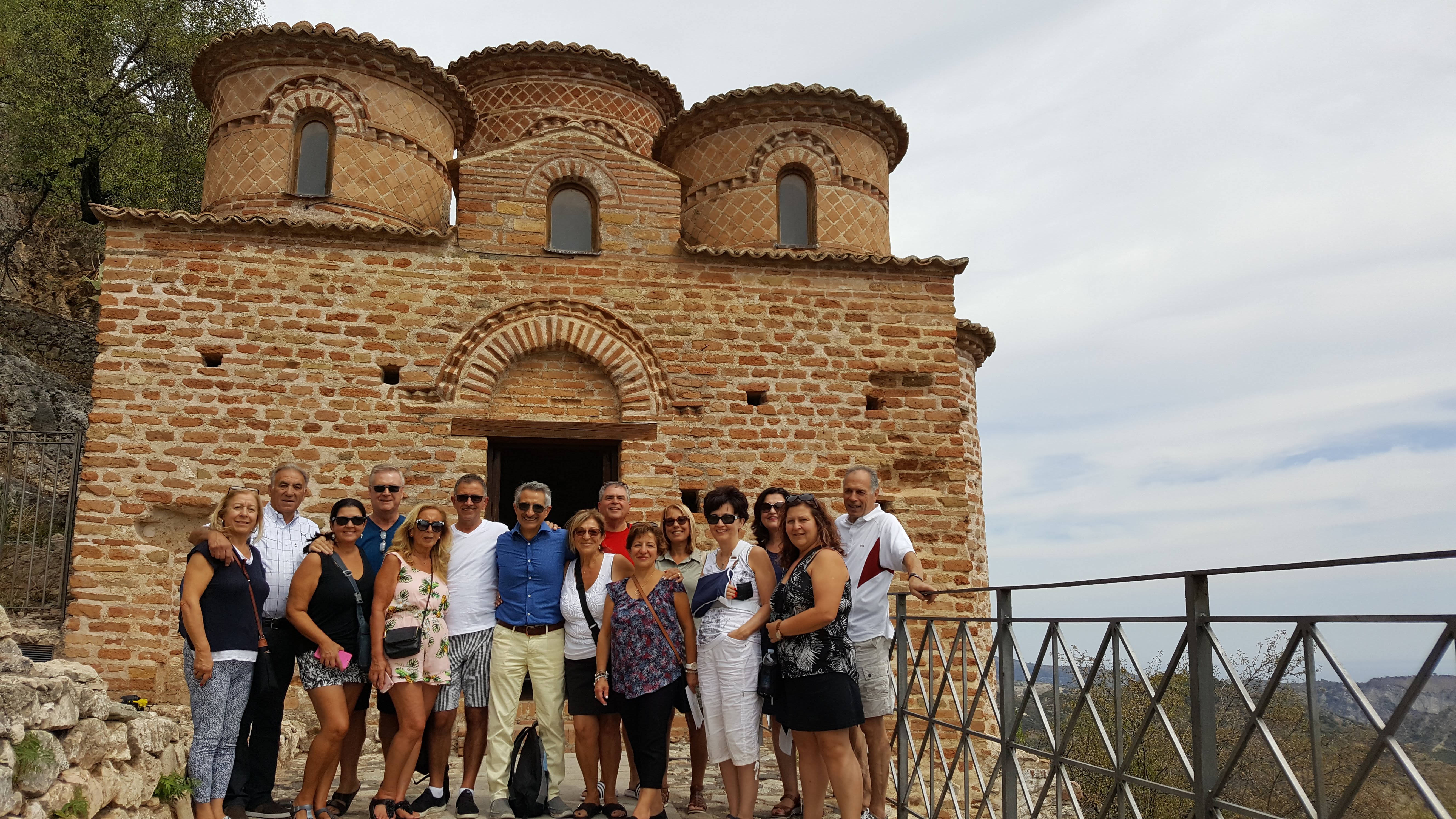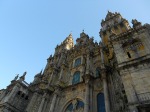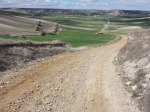 It was an unforgettable experience for everyone as we toured from South to North. Our 18-days journey included the traditional iconic sites in Rome, Florence, Venice, Cinque Terre and the Amalfi Coast as well as some truly amazing, off-the-beaten-path locations in Southern Italy and especially Calabria. It was an ongoing feast for the eyes, and soul and a culinary bounty, as we travelled across seven different “regioni”. Some of the more memorable highlights were the traditional home-made calabrese dinners in
It was an unforgettable experience for everyone as we toured from South to North. Our 18-days journey included the traditional iconic sites in Rome, Florence, Venice, Cinque Terre and the Amalfi Coast as well as some truly amazing, off-the-beaten-path locations in Southern Italy and especially Calabria. It was an ongoing feast for the eyes, and soul and a culinary bounty, as we travelled across seven different “regioni”. Some of the more memorable highlights were the traditional home-made calabrese dinners in  Montalto Uffugo, Stilo and San Giorgio Morgeto; our private boat cruise along the spectacular Amalfi Coast where we went swimming in the Gulf of Sorrento. Our evening at the historic Teatro Margherita in Rome to watch Verdi’s La Traviata while enjoying a fine gourmet dinner was truly outstanding. Also memorable was the exclusive wine tasting in Pienza, and Montepulciano. (more…)
Montalto Uffugo, Stilo and San Giorgio Morgeto; our private boat cruise along the spectacular Amalfi Coast where we went swimming in the Gulf of Sorrento. Our evening at the historic Teatro Margherita in Rome to watch Verdi’s La Traviata while enjoying a fine gourmet dinner was truly outstanding. Also memorable was the exclusive wine tasting in Pienza, and Montepulciano. (more…)
 Jordan: a hidden gem located at the crossroads of three continents.
Jordan: a hidden gem located at the crossroads of three continents.
Jordan is considered by many to be the melting pot of civilization. It’s richness in historical, cultural, and religious elements gives it a privileged place in the Middle East. A politically stable, calm and safe Middle Eastern country, Jordan is a touristic hub, the home of many internationally renowned restaurants, luxury hotels, attractions, beaches, mountains, deserts, lakes and resorts
Last November, we were part of a FAM trip, sponsored by the Jordan Tourism Board.
 Our Royal Jordanian Airlines direct flight from Montreal landed in Amman, the capital city of Jordan. With over four million inhabitants, Amman is one of the most visited cities in the Arab world. In spite of ever-greater influence of modernization, science and technology, Amman manages to preserve the rare and dual personality of a modern metropolis and ancient crossroads of peoples and civilizations at the same time.
Our Royal Jordanian Airlines direct flight from Montreal landed in Amman, the capital city of Jordan. With over four million inhabitants, Amman is one of the most visited cities in the Arab world. In spite of ever-greater influence of modernization, science and technology, Amman manages to preserve the rare and dual personality of a modern metropolis and ancient crossroads of peoples and civilizations at the same time.
What makes Jordan attractive to tourists is undoubtedly its rich historical heritage that dates back 7250 years before the birth of Christ. Among some of the most impressive Neolithic artifacts are the statues of Ain Ghazal, which you can admire while visiting the national museum of Jordan, in the Amman Citadel.
In ancient times, the city of Amman was known as Rabath Ammon. An ancient trading post, it later became an important Roman garrison and was renamed Philadelphia. As you enter the Citadel, not far from the center of Amman, you will be amazed to discover perhaps one of the world’s most beautiful and best preserved Roman archaeological sites. An entire Roman city unfolds before your eyes as you walk through the ancient avenues, flanked by astonishing monuments and exceptional architectural treasures.
After a brief visit to Jerash, another hidden gem of the ancient world, our tour continued on to Petra. A little less than three hours south of the capital, not far from the ecological reserve “Dana Biosphere”, opens a series of canyons through a rocky and desert area, leading up to one of the new Seven Wonders of the world.
A natural setting for numerous adventure films, Petra is one of the most important travel destinations, on par with Machu Picchu or the Great Wall of China. The ancient entrance to the capital of the Nabataeans, is about three kilometres from the new town of Petra. You can walk, or if you prefer take a ride on the back of a mule, a camel, or a donkey to arrive at the “treasury”, the ancient doors of the lost rose city.
There are no adjectives that can adequately describe the beauty and enchantment of these places: the sounds of traditional music; the garb of nomadic Bedouin peoples who welcome you with open arms; the rich aromas and flavours of food and drink prepared according to age-old customs; and the astonishing architectural marvel of the buildings carved in the rocks, is, to say the least breath-taking.
On the opposite side, just over two hours north of Amman, lies the ancient, biblical baptismal site on the river Jordan. This site is not only a key destination for tourist groups from all over the world but also a place of pilgrimage for many people of different religious backgrounds. Tradition has it that it was here, on the west bank of the Jordan, not far from Nazareth and the Sea of Galilee, that Jesus was baptized by John. Certainly one of the highlights of our trip was the opportunity to bathe in those same waters and walk on the same land where Christ, the prophets, and the Saints once tread.
 There are many other fascinating places to visit in Jordan from Mount Nebo, where God showed Moses the Promised Land, to the Moab plains beyond, where one glimpses the ancient city of Jericho. It is here that you will admire the best-preserved mosaics in the world; depicting the “Story of Creation” and the “Tree of Life”.
There are many other fascinating places to visit in Jordan from Mount Nebo, where God showed Moses the Promised Land, to the Moab plains beyond, where one glimpses the ancient city of Jericho. It is here that you will admire the best-preserved mosaics in the world; depicting the “Story of Creation” and the “Tree of Life”.
Further down, along the King’s highway, you will have another unforgettable experience as you float effortlessly in the salty waters of the Dead Sea or give your skin a youthful make-over with the mineral-rich muds readily available at one of the numerous five-star resorts in the area.
For a truly unforgettable experience, Jordan is a must-see. Add this destination to your bucket list for a first-class holiday, guaranteed to be of immense cultural, historical and spiritual value.
 Santiago de Compostela un pellegrinaggio per la salute dello spirito e del corpo
Santiago de Compostela un pellegrinaggio per la salute dello spirito e del corpo
Assieme a Roma e Gerusalemme, Santiago De Compostela fu meta, in epoca medievale, di uno dei tre principali pellegrinaggi del mondo Cristiano. Negli ultimi anni questa ridente cittadina spagnola, capoluogo della Galizia ha riafferrato la sua antica notorietà anche grazie all’effetto del social media.
Il nome Santiago è, in effetti, una forma derivata dallo spagnolo “Sant-Yago” e dal latino “Sancti Jacobi”, per indicare il sant’apostolo scelto da Gesù all’inizio della sua missione, dopo essere stato battezzato nel Giordano da San Giovanni.
San Giacomo, assieme al fratello minore Giovanni furono i primi discepoli a seguire Gesù. Le sacre scritture ci dicono che i due erano assieme al padre Zebedeo, pescatori sul lago di Tiberiade, non lontano di casa quando Gesù li chiamo`.
San Giacomo, il quale secondo la tradizione aveva un carattere assai focoso e quindi non aveva peli sulla lingua nell’esporre le ingiustizie e le tirannie dei potenti del suo tempo, divenne il primo apostolo martire quando nel primo secolo fu fatto decapitare dal re Erode Agrippa.
Le sue spoglie, la leggenda vuole, furono trafugate in una località remota in Galizia (l’attuale Spagna) dove riapparvero miracolosamente e propiziamente nell’anno 830 in seguito ad un sogno avuto dall’anacoreta Pelagio. Il vescovo Teodomiro accorso in sito e trovate le spoglie del santo, dichiarò quella località campestre luogo sacro e la battezzò con il nome di “campus stellae” ossia il campo della stella, da cui deriva il nome attuale Compostela.
La località fu a breve tempo scenario di dure battaglie contro gli invasori musulmani i quali furono debellati definitivamente nell’anno 840 anche grazie all’intervento del Santo. La tradizione vuole che alla guida delle truppe cristiane apparisse miracolosamente il Santo e nella battaglia finale i Mori furono sconfitti una volta per sempre. Da qui nasce il soprannome di “Matamoros”, ossia ammazza mori, che da allora fu attribuito a San Giacomo. La località prese quindi il nome di Santiago e li, nel 1075 fu costruita la cattedrale di Santiago da Compostela dedicata a San Giacomo.
Ogni anno, migliaia di pellegrini percorrono uno dei tanti e lunghi tragitti che dal Portogallo, dalla stessa Spagna ed anche dalla Francia portano alla meta finale che è la maestosa basilica di San Giacomo a Compostela e specificamente alla tomba dell’apostolo Giacomo. I percorsi sono vari ma il più lungo è di circa 800 km e può essere completato in un mese a seconda della forma fisica del pellegrino. Ci sono altri percorsi meno ardui che possono essere completati in meno tempo e con più agevolezza. Ad esempio, partendo da Paredes de Coura, non lontano da Fatima, in Portogallo il percorso può essere facilmente abbordato in meno di dieci giorni, camminando una media di 20 chilometri al giorno.
Questo pellegrinaggio è un’occasione unica nella vita di ogni cristiano. Un’esperienza indimenticabile dal punto di vista spirituale e forse anche d’introspezione personale, questo viaggio potrebbe essere anche un’opportunità unica per rimettere a posto non solo lo spirito ma anche il corpo.
Chi volesse intraprendere questo pellegrinaggio, può associarsi ai pellegrini della Parrocchia di Sant’Andre Bessette a Maple, che assieme al loro parroco, Padre Peter Choi, andranno a Santiago de Compostela a maggio.
Consultate il sito www.TourCentral.ca
Per tutte le informazioni o chiamate il 905-264-5992.
El Camino de Santiago de Compostela … a pilgrimage for body and spirit
During medieval times, Santiago De Compostela was the destination of one of the three main pilgrimages of the Christian world, along with Rome and Jerusalem. In the last few years this charming Spanish town, the capital of Galicia, has regained its old notoriety thanks also to the influence of social media.
The name Santiago comes from the Spanish “Sant-Yago” and from the Latin “Sancti Jacobi” and it identified Saint James, the Apostle chosen by Jesus at the beginning of his mission.
St. James, together with his younger brother John, was the first disciple to follow Jesus. The scriptures tell us that the two were with their father Zebedee, fishing on Lake Tiberias, not far from home when Jesus called them.
St. James, who according to tradition had a very fiery character and therefore had no qualms about exposing the injustices and tyrannies of the powerful of his time, became the first apostle to become a martyr when he was beheaded by King Herod Agrippa in the first century AD.
Legend has it that His remains were secretly taken to a remote location in Galicia (present-day Spain). In the year 830 a mystic by the name Pelagio had a vision in a dream that revealed to him the location of the remains of the Apostle. The bishop Teodomiro came to the site and found the tomb of the saint. He subsequently declared that locality a sacred place and named it “campus stellae” meaning, “the field of the star”, from which derives the current name Compostela.
Soon after, the locality became the scenario of fierce battles against Muslim invaders who were ultimately defeated in the year 840, thanks to the intervention of the saint. Tradition has it that, in the final battle, the Saint miraculously appeared at the head of the Christian army and the Moors were defeated once and for all. This miracle gained St. James the nickname of “Matamoros”, or “Moors’ slayer” and the area took the name of Santiago. In 1075 a magnificent cathedral dedicated to San James was built in the present day location at Santiago de Compostela.
Every year, thousands of pilgrims travel (primarily on foot) along one of the many long routes from Portugal, Spain, and France that lead to the tomb of the Apostle James. There are many different routes (known as “Caminos”); the longest of which is about 800 km and can be completed in a month depending on the fitness level of the pilgrim. There are other less arduous caminos that can be completed in less time and with more ease. For example, the route that starts from Paredes de Coura, not far from Fatima in Portugal, can easily be approached in less than ten days walking an average of 20 kilometers a day.
This pilgrimage is a unique occasion for travellers everywhere; and not only for Christians. Spiritually it is an unforgettable experience which gives everyone a chance for a deep, inner, and personal introspection. At the very least, this journey presents itself as a unique opportunity to recharge not only the spirit but also the body.
If you are interested in experiencing this unforgettable journey, please go to www.tourcentral.ca or call us at (905) 264-5992.
In occasione della festa dell’Epifania, propongo un mio articolo apparso sul Corriere Canadese l’anno scorso.

 Toronto – Una delle immagini più tenere che conservo della mia infanzia è quella di appendere ai piedi del letto un grossa calza prima di andare a dormire la sera del 5 gennaio, la notte dell’Epifania.
Toronto – Una delle immagini più tenere che conservo della mia infanzia è quella di appendere ai piedi del letto un grossa calza prima di andare a dormire la sera del 5 gennaio, la notte dell’Epifania.
Tanti bambini come me, in quella notte magica aspettavano con ansia la venuta della vecchia signora, e sognavano che la Befana portava loro giocattoli, balocchi e leccornie. Alcuni di noi avevamo qualche incubo di svegliarsi trovando la calza solo colma di cenere e carboni.
La cara signora, vuole la leggenda, ebbe un fatidico incontro con i Re Magi che si recavano a rendere omaggio al Bambino Gesù. E in quella notte che “già fu sì buia”, rifiutò l’invito dei tre sovrani di seguirli a Betlemme, dicendo che era troppo indaffarata alle faccende della casa.
Ma dopo un breve esame di coscienza, si rese conto che forse avrebbe dovuto seguire i tre illustri personaggi provenienti dall’oriente, e presa la sua scopa volante, uscì in fretta e furia dalla casetta a cercare disperatamente di raggiungere Gaspare e compagni.
Ma ahimè neanche con la scopa volante a propulsione ionica riuscì a riacciuffare i tre viandanti e come molti di noi quando perdiamo quell’occasione unica che avrebbe anche potuto cambiarci la vita, cerchiamo spesso di ritornare sui nostri passi anche se con rammarico, poi ci rendiamo conto che più delle volte è già troppo tardi.
Sicché ancor oggi, a distanza di duemila anni, la brava Befana continua a cercare invano la grotta di Betlemme e va di casa in casa a portare doni ai bimbi buoni imitando i Re Magi che recarono oro, incenso e mirra a Gesù bambino.
I tempi e le usanze sono certamente cambiati e di sicuro la tradizione della Befana è stata sorpassata da quella di Babbo Natale. Ma ancor oggi dalla storia della Befana si può ricavare una morale sia per grandi che per piccini.
A parte quella ovvia di fare i bravi bambini se si vuole ricevere premi in ricompensa, la morale più grande secondo me e quella di agire sulle opportunità di far del bene che ci si presentano lungo il cammino della vita, anche quando siamo sempre un po’ troppo indaffarati.
English Version
One of my fondest childhood memories is that of hanging a big stocking at the foot of the bed on the eve of the feast of the Epiphany, January 5th.
Many children, like me, on that magical night would impatiently await the arrival of the “Befana”. We would dream of receiving toys and goodies from the kind old lady. Some of us would also have nightmares of waking up to stockings stuffed with ashes and charcoal instead.
The legend has it that, during that night that “was so deep”, the dear old lady had an encounter with the Magi who were on their way to pay homage to baby Jesus. The three Kings invited her to join them on their journey to Bethlehem. But she refused claiming that she was too busy with household chores.
After some reflection, however, she realized that perhaps she should have followed the three illustrious dignitaries coming from the East. She grabbed her magic broom and flew out the door in a desperate effort to reach Gaspar and company.
Alas, she was not able to find the three voyageurs even with her ion charged flying broom. When a unique life-changing opportunity is missed, many of us often try to desperately go back and recapture that moment over and over again, even though most of the time it may be too late.
And so, two thousand years later, the good Befana is still trying to find the grotto in Bethlehem. She travels from house to house searching and delivering gifts to good boys and girls just as the Magi brought gold, frankincense and myrrh to baby Jesus.
Times and customs have indeed changed and certainly the tradition of the Befana has been replaced by that of Santa Claus. But even today from the story of the Befana we can extract a moral for children and grownups alike.
Aside from the obvious adage that good children will receive gifts as just recompense for their good deeds, in my opinion there is a deeper moral here and that is to do good whenever the opportunity presents itself even if we are taken up with our busy everyday schedule.
 Toronto – Inizio questo primo articolo del 2018 della rubrica “Si Viaggiare” con un augurio di Buon Anno Nuovo a tutti voi e che sia un anno di salute, prosperità e di viaggi.
Toronto – Inizio questo primo articolo del 2018 della rubrica “Si Viaggiare” con un augurio di Buon Anno Nuovo a tutti voi e che sia un anno di salute, prosperità e di viaggi.
Come disse Sant’Agostino, Il mondo è un libro, e chi non viaggia, non legge che una sola pagina.
Con questo precetto in mente, e giacché siamo ancora in tema natalizio; domani ricorrerà appunto la festa dell’Epifania, vorrei parlarvi del mio ultimo viaggio in Giordania.
Una terra, la Giordania, non priva di elementi biblici e per via della sua storia e posizione geografica che la porta strategicamente all’incrocio di tre continenti, è da molti considerata come il crogiuolo della civiltà.
La Giordania è una nazione del Medio Oriente politicamente stabile, molto tranquilla e sicura da viaggiare, e oltre ai suoi innumerevoli siti storici è ben servita da ristoranti di fama internazionale, hotel di lusso, attrazioni, spiagge, montagne, deserti, laghi e località di villeggiatura ben attrezzate che non hanno nulla da invidiare a quelle europee o dei mari del sud.
Si arriva alla capitale Amman, come prima importante tappa lungo il nostro percorso. Con oltre quattro milioni di abitanti, Amman è una delle città più visitate del mondo arabo. Una città che malgrado soffra l’incessante impulso della tecnologia e del progresso, riesce ancora a conservare la rara e duplice personalità di metropoli moderna e di antico incrocio di popoli e civiltà allo stesso tempo.
Ciò che la rende innanzitutto turisticamente attraente è senza dubbio la sua storia che risale a ere neolitiche. Basta menzionare le statue di Ain Ghazal, che potrete ammirare nel museo nazionale della Giordania, risalenti a 7250 anni Avanti Cristo.
Rabath Ammon, antico nome di Amman, divenne poi importante presidio Romano e all’epoca fu ribattezzata con il nome di Filadelfia. Nella cittadella, non lontano dal centro della moderna metropoli, rimarrete meravigliati e stupiti nello scoprire forse uno dei più belli e meglio conservati complessi di scavi e ritrovi archeologici d’epoca romana al mondo. Un’intera città romana si dipana man mano che attraversate gli antichi viali, rivelando monumenti e strutture eccezionali.
La seconda tappa d’obbligo in Giordania è sicuramente l’antica città di Petra. A poco meno di tre ore a sud della capitale, e non lontano dalla riserva ecologica “Dana Biosphere”, si apre una serie di canyon attraverso una zona rocciosa e desertica fino ad arrivare ad una delle nuove sette meraviglie del mondo.
Scenario naturale di numerosi film d’avventura, Petra si annovera tra mete di viaggio importantissime al pari di Machu Picchu in Perù o della Grande Muraglia cinese. Arriverete di fronte alle vecchie porte della capitale degli antichi Nabatei, a circa 3 kilometri dall’entrata del nuovo paese di Petra a piedi o se preferite a dorso di un mulo, di un cammello, o di un asino. No vi sono fotografie o aggettivi che possano descrivere adeguatamente la bellezza e l’incanto di questi luoghi. Sarete trasportati in un mondo surreale arricchito da suoni e immagini di bambini sorridenti, di gente di popoli Beduini nomadici che vi accoglieranno a braccia aperte, offrendovi da bere o da mangiare e mettendo a vostra disposizione la loro genuina ospitalità senza troppe pretese.
Dalla parte opposta, a poco più di due ore a nord di Amman, si trova l’antico fonte battesimale sul fiume Giordano; luogo questo di mete di pellegrinaggi e di gruppi turistici provenienti da ogni parte del mondo. La tradizione vuole che fosse proprio qui, da questa parte della riva ovest del Giordano non lontano da Nazareth e dal mare di Galilea, dove Gesù fu battezzato da San Giovanni. L’emozione che trarrete nel bagnarvi in quelle stesse acque è indescrivibile; qualcosa che non dimenticherete mai.
Ci sono moltissimi altri luoghi da visitare in Giordania tra i quali il monte Nebo dove Dio mostrò a Mosè la Terra Promessa, e aldilà delle pianure di Moab s’intravede l’antica città di Gerico.
Visitate la Giordania per un’esperienza davvero indimenticabile; oltre a una vacanza di classe, sarà per voi un viaggio culturale, storico, religioso che arricchirà senz’altro il libro personale del viaggio della vostra vita.
Troverete altri dettagli sui prossimi tour in Giordania su www.tourcentral.ca




